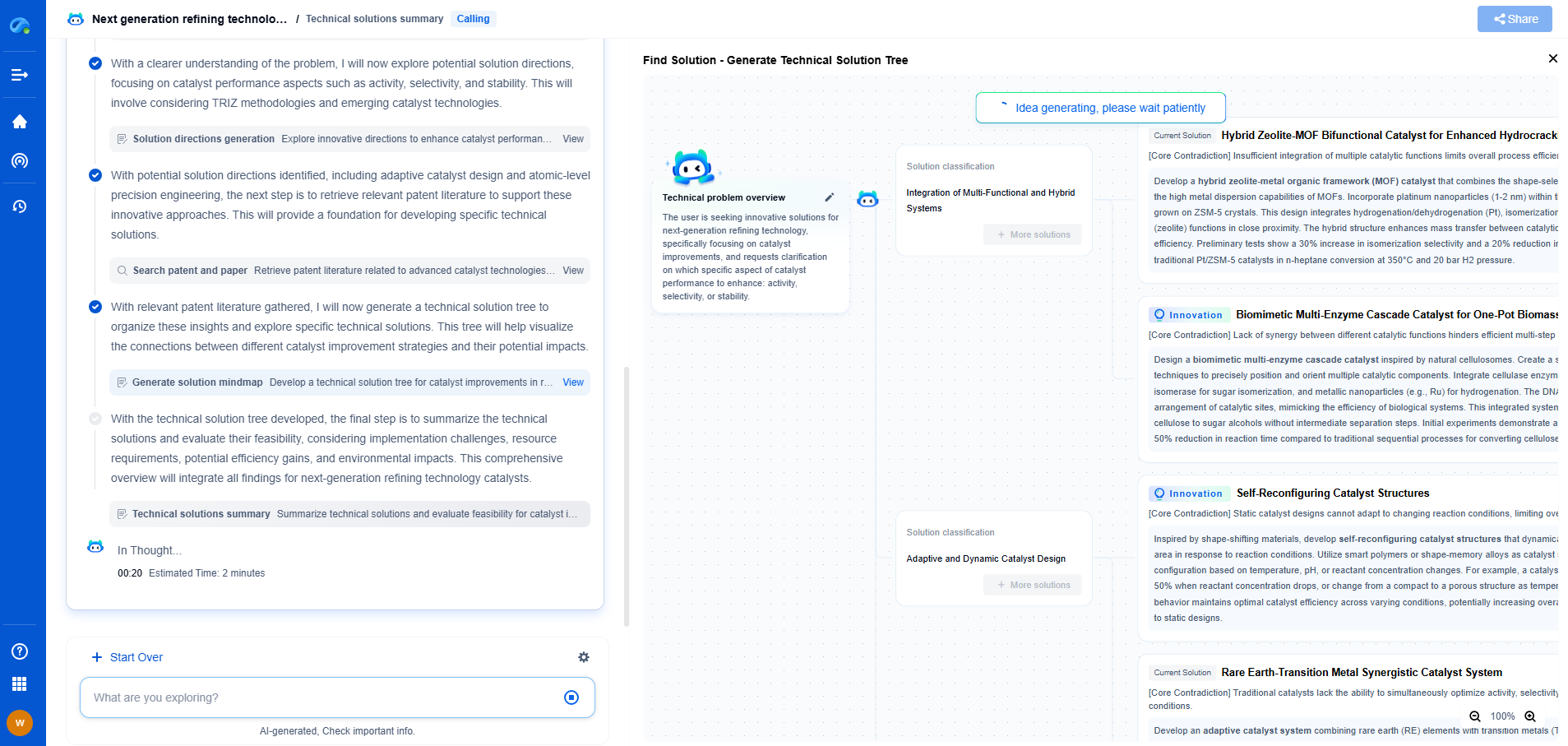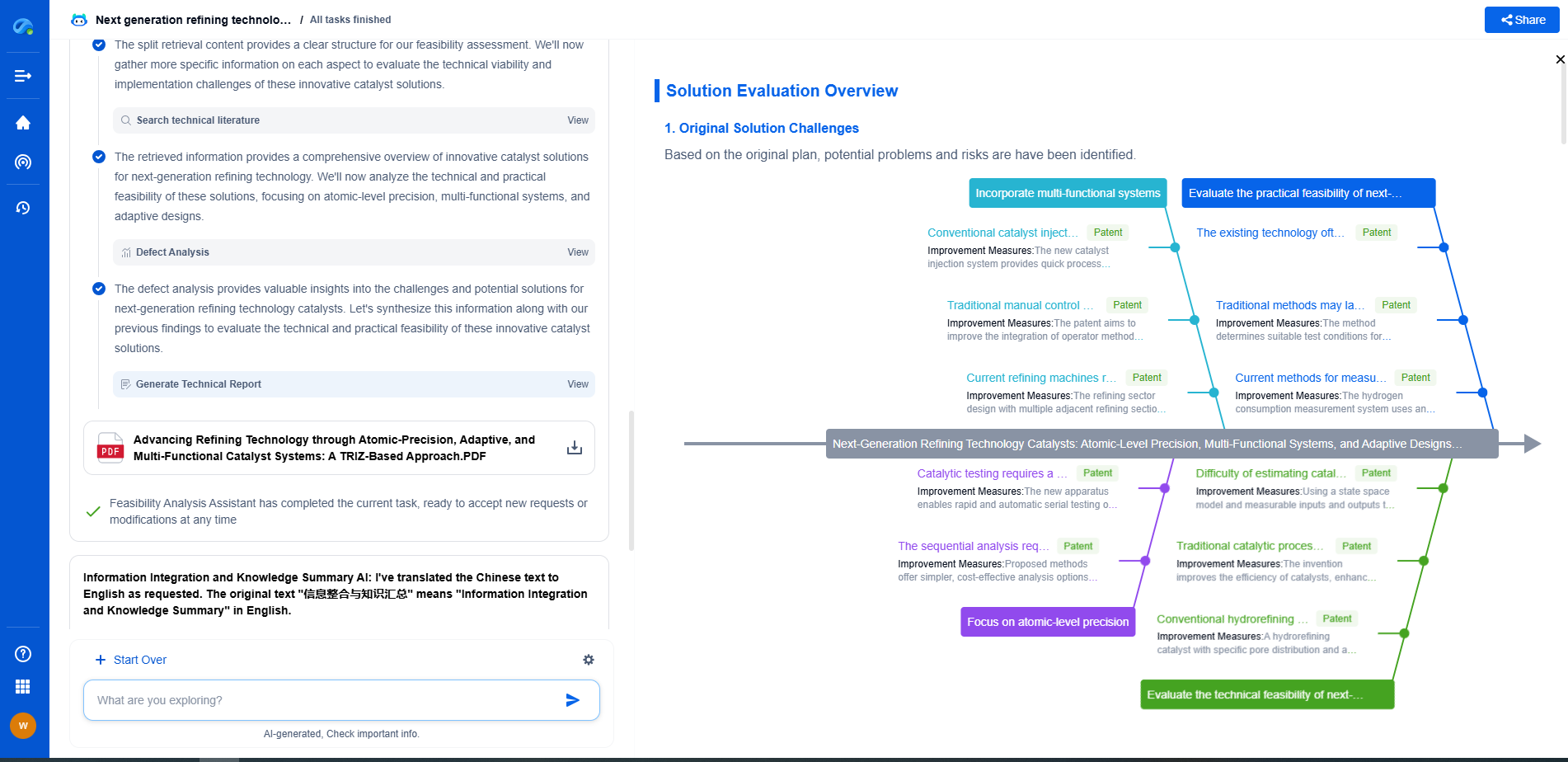When Will Solid-State Batteries Hit the Mass Market?
JUN 20, 2025 |
Solid-state batteries have been hailed as the next big leap in energy storage technology. Unlike conventional lithium-ion batteries, which use liquid electrolytes, solid-state batteries utilize solid electrolytes. This fundamental shift offers potential advantages such as higher energy density, improved safety, and faster charging times. However, despite the excitement surrounding these batteries, they have yet to become a common fixture in consumer electronics and electric vehicles.
Current Challenges in Solid-State Battery Development
The journey from research labs to mass-market products involves overcoming several technical and economic hurdles. One of the primary challenges is the scalability of production. Solid-state batteries require precise manufacturing processes and new materials that are not yet produced at a commercial scale. Additionally, while solid electrolytes promise enhanced safety and performance, finding the right materials that are both stable and conductive remains a daunting task.
Economic Factors Affecting Adoption
From an economic perspective, the cost of producing solid-state batteries is still prohibitive for mass-market applications. Established lithium-ion technologies have benefitted from decades of optimization and economies of scale, making them relatively inexpensive. In contrast, solid-state batteries are still in the early stages of development. Investment in infrastructure, research, and development is necessary to bring down costs and make them viable for widespread use.
Potential Applications and Industry Interest
Despite these challenges, numerous industries are investing heavily in solid-state technology, driven by its promising benefits. Automotive companies, in particular, have shown significant interest, as solid-state batteries could revolutionize electric vehicles by offering longer ranges and reduced charging times. Consumer electronics companies are also exploring these batteries for devices that require high power density and improved safety features.
Forecasting Market Entry
Predicting when solid-state batteries will hit the mass market involves extrapolating from current research trends and industry investments. Experts suggest that the technology may be three to five years away from widespread commercial availability. This timeline is supported by announcements from several major companies planning to launch solid-state products within this window. However, unforeseen technical challenges or shifts in market demand could alter this timeline.
The Role of Innovation and Policy
Innovation in battery technology is often accelerated by supportive policies and funding. Governments and private enterprises that prioritize renewable energy and advanced battery technologies can play a critical role in bringing solid-state batteries to market faster. Additionally, collaborations between universities, research institutions, and industries could lead to breakthroughs that hasten commercialization.
Conclusion: The Future of Solid-State Batteries
In summary, while solid-state batteries hold immense promise for the future of energy storage, their journey to the mass market is fraught with challenges. The next few years will be crucial in determining whether these hurdles can be overcome. With continued investment and collaboration in research and development, solid-state batteries could become a cornerstone technology in the push for greener, more efficient energy solutions. As advancements continue, consumers and industries alike eagerly await the day when solid-state batteries are a common reality in everyday devices.
Accelerate Breakthroughs in Fuel Cell and Battery Innovation—with the Power of AI
From solid-state battery breakthroughs to high-efficiency hydrogen fuel cells, keeping pace with fast-evolving chemistries, global patent landscapes, and emerging application pathways is an ever-growing challenge for R&D and IP professionals.
Patsnap Eureka, our intelligent AI assistant built for R&D professionals in high-tech sectors, empowers you with real-time expert-level analysis, technology roadmap exploration, and strategic mapping of core patents—all within a seamless, user-friendly interface.
Whether you're optimizing cathode formulations, evaluating electrolyte stability, or navigating the crowded patent space around battery pack design, Eureka empowers you to move faster and with greater confidence.
Start your journey with Patsnap Eureka today—streamline your research, enhance decision-making, and power the future of energy with AI-driven clarity.
- R&D
- Intellectual Property
- Life Sciences
- Materials
- Tech Scout
- Unparalleled Data Quality
- Higher Quality Content
- 60% Fewer Hallucinations
Browse by: Latest US Patents, China's latest patents, Technical Efficacy Thesaurus, Application Domain, Technology Topic, Popular Technical Reports.
© 2025 PatSnap. All rights reserved.Legal|Privacy policy|Modern Slavery Act Transparency Statement|Sitemap|About US| Contact US: help@patsnap.com

